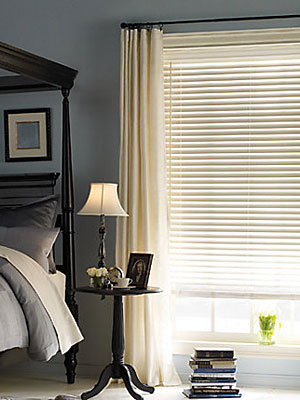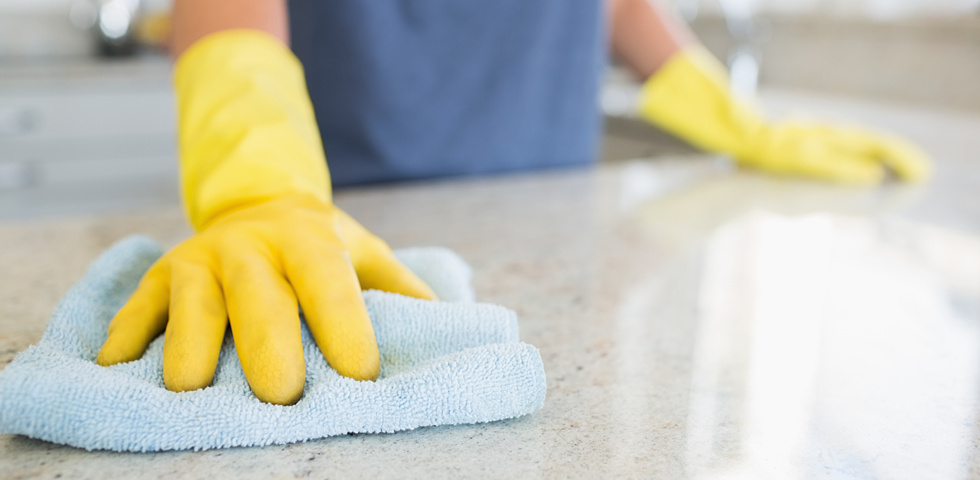Carpet
Routine Care
Dirt and dust particles cause more damage than merely dirtying your carpet. When allowed to remain in carpet, these gritty particles can roughen the carpet’s pile — causing it to look aged and worn long before its time.
Vacuum frequently with a good vacuum cleaner. If there are very high traffic areas that get excessive daily use, try to vacuum these areas daily. Be sure to change your vacuum bag frequently to enable the vacuum to function at full capacity.
Use runners and mats in high traffic areas.
Reposition furniture periodically.
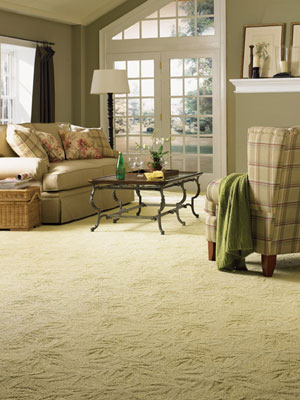
4 Simple Steps to Prevent Permanent Stains
Step 1: Blot liquids with a dry, white cloth or towel. For solids or semi-solids, scrape up the matter with a rounded spoon or vacuum until completely removed. Do not scrub the carpet — especially with any kind of brush.
Step 2: Pretest any cleaning solutions in a hidden area, such as a closet, to make sure the solution does not damage the dye or fiber.
Step 3: If there was no change to the carpet, proceed with the chosen cleaning solution. Apply a small amount to a white cloth, allow it to sit for several minutes, and then work gently into the stain from the outside in (to prevent the stain from spreading).
Step 4: Once you’ve removed the stain completely, rinse the area thoroughly with cold water and blot with a dry cloth until all cleaning solution residue is removed.
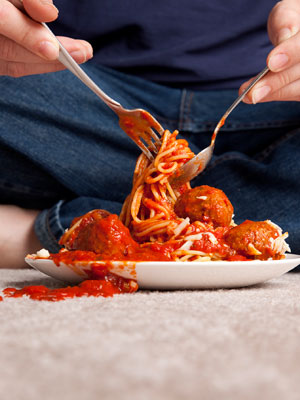
Preventative Care
Annual hot water extraction cleaning is recommended.
Furniture coasters help distribute the weight of heavy items and are recommended — especially for furniture with wheels that may leave permanent indentations in the carpet and padding.
Bleaches, tile cleaners, mildew removers, oven cleaners, drain openers, and plant food can all permanently discolor your carpet.
Entrances, doorways, traffic lanes and sitting areas will collect dirt faster than other areas. Clean these areas as soon as they begin to show soil to stop dirt from spreading.
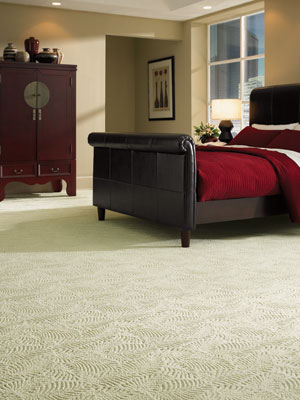
Ceramic Tile
Routine Care
Ceramic tile provides a unique combination of beauty and durability. Its hard, non-porous surface provides a natural, low-maintenance finish. Once properly installed, it essentially requires little more than dusting and occasional damp mopping.
- Sweep or vacuum regularly – keeping dirt and grit off your tile is the most effective way of prolonging its life.
- Use a damp mop or sponge, rinse thoroughly and wipe dry.
- Glazed tiles: use all-purpose, non oil-based cleaner
- Unglazed tiles: use a solution of water and soapless detergent instead of an all-purpose cleaner.
- Do not use alkaline-based cleansers on a floor that has been sealed.
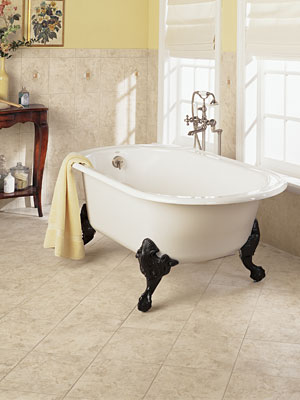
Routine Care, continued
Do not use cleansers containing acid or bleach for routine maintenance. Vinegar can etch and damage some tiles; ammonia will discolor grout.
Do not use wax cleaners, oil-based detergents, or sealants to maintain your tile (sealants may be used on grout joints and natural stone).
Do not use harsh cleaning aids like steel wool pads or scouring pads made of metal.
For heavy cleaning, use a scouring powder and scrub with a white nylon pad. For heavier stains, make a paste and let sit for five minutes before scrubbing. Rinse and wipe dry.
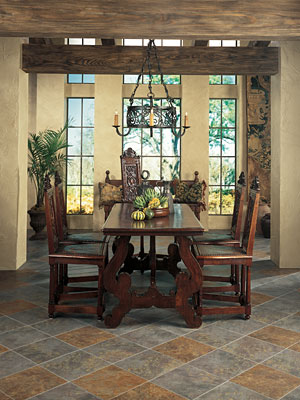
Preventative Care
One of the key benefits of tile is its low maintenance requirements. With proper routine care, no additional preventative care is required. In the event that your tile has been damaged or soiled to the extent that it needs to be replaced, we recommend contacting your builder or a professional to make the repair.
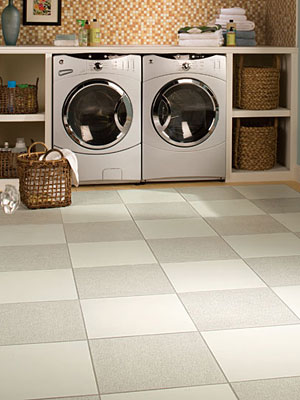
Hardwood
Routine Care
Frequently sweep and vacuum the floor to remove loose dirt before it can scratch or be ground into the floor’s surface.
Never clean or wet mop your hardwood floor with water; water can dull the finish and permanently damage the floor.
Do not use any wax or cleaner that must be mixed with water, such as oil soap, as this may ruin your floor and result in a loss of warranty.
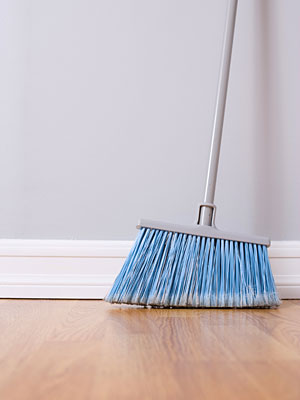
Routine Care, continued
Do not allow puddles of cleaner to remain on the floor’s surface. Excess liquid may damage the fiber of the wood.
Place walk-off mats designed for hardwood floors at each entryway. Tiny particles of dirt and stone are like sandpaper and will scratch your hardwood floors.
Avoid using rubber-backed or non-ventilated mats or rugs as they can damage your floor by trapping moisture.

Preventative Care
Keep in mind that soon after your hardwood floors are installed, they’ll begin to “mellow” and their color may change a bit. No matter what type of hardwoods you choose, you can expect some slight changes to occur due to exposure to sunlight, temperature, and oxygen. The first few months after installation will be the time of the most extreme change.
In addition to the photosensitivity your floor will be undergoing in the first few months, the coating is also curing in the first month or so. During this time, it is best to not put down rugs—even with rug pads—so that patterns don’t wear into your hardwood floors’ surface.
Use floor protectors on the feet of furniture to avoid scratches.
Certain types of casters on furniture may damage hardwood flooring. Barrel-type caster wheels or wide, flat glides are best for protecting your hardwood floor.
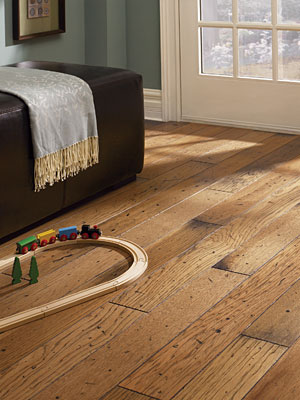
Preventative Care, continued
A humidity level of 35-55% is recommended for hardwood floors. In extremely dry conditions, a humidifier is recommended to prevent excessive shrinkage of wood floors due to low humidity levels.
Spike or stiletto high-heel shoes, especially those in poor repair, may cause denting and related damage to hardwood floors due to the extremely high compressive force they generate.
Pets’ paws and nails can scratch and dull hardwoods if your pet is not frequently groomed. Keep nails trimmed and dull (if you hear clicking when your pets walk on your hardwoods, their nails are too long).
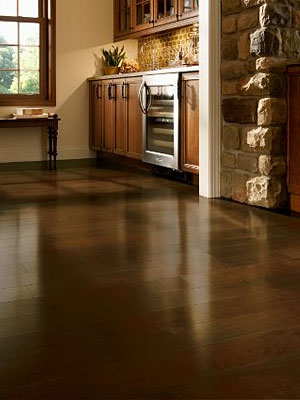
Laminate
Routine Care
Never flood the floor with water or cleaner. Laminate flooring can expand if excessive water is used while cleaning. After mopping, use a clean dry cloth to wipe the floor of any excess water.
Difficult stains such as coffee or tea can be removed using a mild household cleaner/detergent and a soft bristle brush, repeating as necessary. If a stain persists, use a paste of baking soda and water and apply with a soft bristled brush.
For difficult stains, use nail polish remover that contains acetone or alcohol.
Hair, textile, and food dyes can cause permanent stains. If dye should happen to spill, wipe it up immediately with dishwashing detergent or an all-purpose cleaner.
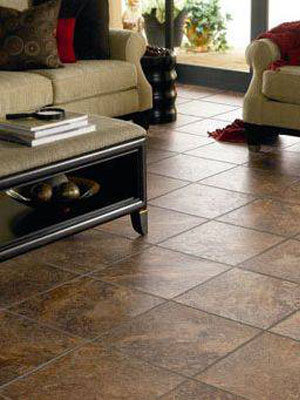
Preventative Care
To prevent indentations, use floor protectors on chairs and other furniture.
Do not use soap-based detergents or mop-and-shine products as they may leave a dull film on your floor.
Do not use abrasive cleaners, steel wool, or scouring powder, which can all scratch the laminate surface.
Do not use a wax polish on your laminate floor.
Never place pots or dishes directly from the oven or a hot surface onto an unprotected laminate surface.
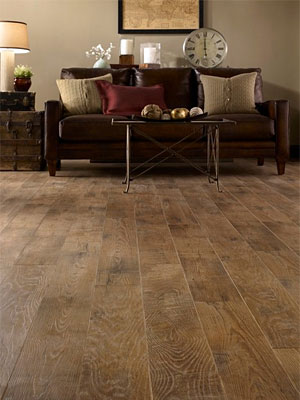
Natural Stone
Routine Care
Many of the cleaners acceptable for use on ceramic tile can stain, damage or dull stone. Only use cleaners specifically designed for cleaning stone. These cleaners contain no acids and are concentrated neutral pH cleaners that will not affect existing sealers or wax-type coatings.
For routine maintenance the surface of the stone should be dampened with clear water. This will keep the cleaning solution on the surface so it can be effective.
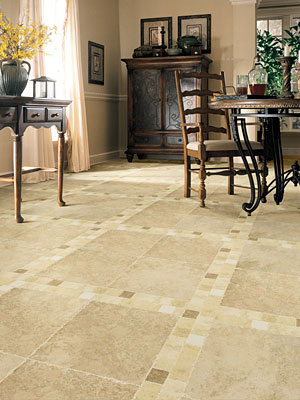
Step-by-Step Instructions
Step 1: Apply a solution of the cleaner and water to the stone surface with a sponge or mop. (On walls, kitchen counters or vanity tops, a spray bottle can be used to apply the cleaning solution.)
Step 2: Allow the formula to sit for a period of time recommended by the manufacturer (usually 3 to 5 minutes).
Step 3: Agitate with a sponge, synthetic mop, soft-bristled brush or using of a floor-scrubbing machine.
Step 4: Mop up dirty solution and then buff dry.

Step-by-Step Instructions, continued
Once the stone has been cleaned, you can periodically apply a spray buff wax-type floor finish to enhance the beauty and luster of polished stone (including countertops). Apply the finish with a spray applicator and buff immediately with a white nylon pad.
Stone poultice will remove stains and grout haze from stone. Poultice is a fine, non-acidic, absorptive clay cleaning powder that removes deep-set oil stains, grease and light cementitious grout haze from polished and unpolished natural stone. However, Poultice may dull the shine of the polished stone. If this occurs, you will need to use a stone polish to restore the natural shine.
Preventative Care
Dirt and dust will scratch the surface of stone. Stone floors should be vacuumed or dust-mopped frequently to remove abrasive agents from the stone surface.
Natural stone should be cleaned with neutral cleaners and never those that contain acid or bleach. Acids, even a light solution of vinegar and water, will etch and eventually damage natural stone.
Sealing stone will protect your investment by keeping moisture and dirt from penetrating the surface as easily as it will untreated stone.
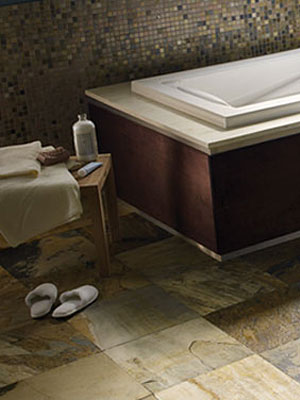
Resilient
Routine Care
Sweep or vacuum floors thoroughly. Remember that your vacuum’s beater bar should not be used when vacuuming because it can visibly damage the floor surface.
Mix 1/4 cup cleanser per gallon of cool water. Wax or solvent-based polishes should not be used on resilient floors. Don’t use detergents, abrasive cleansers or mop and shine products as these may leave a dull film on your floor.
Wash with lightly dampened mop; don’t use highly abrasive scrubbing tools and change cleaning solution frequently. Allow floor to dry.
Wipe up spills as soon as possible using a damp sponge and appropriate cleaner.
Remove stains and spills that have been allowed to sit with a cleaner specified for use on resilient floors.
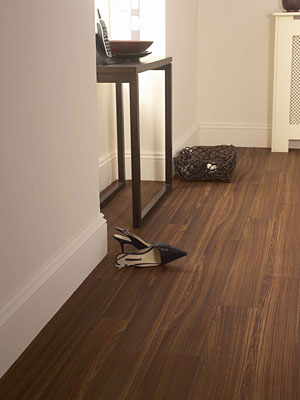
Preventative Care
When moving appliances or heavy furniture, lay a plywood panel on your floor and “walk” the item across it. This protects your floor from scuffing and tears.
Use floor protectors on furniture to reduce indentation. As a general rule of thumb, the heavier the item, the wider the floor protector needed.
Be careful with rolling casters. They can damage the floor. If you choose to use them, the double wheel type is generally the best option.
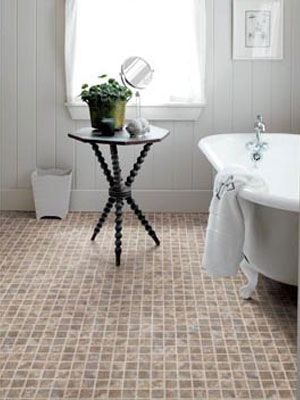
Preventative Care, continued
Place a walk-off mat at outside entrances to reduce the amount of dirt brought into your home. We do not recommend the use of rubber- or latex-backed mats because the chemical (antioxidant) used to keep the backing from becoming brittle can permanently stain your floor. We suggest a non-staining vinyl-backed mat or a woven rug that is colorfast. Most of these products are identified as colorfast by the manufacturer.
Spike or stiletto high-heel shoes, especially those in poor repair, may cause denting and related damage to your floors due to the extremely high compressive force they generate.
Pets’ paws and nails can scratch and dull hardwoods if your pet is not frequently groomed, keep nails trimmed and dull.
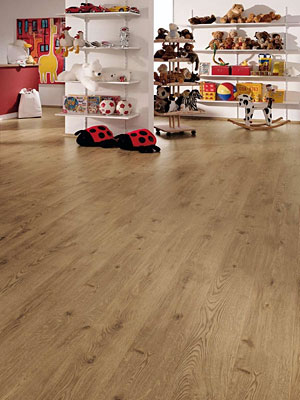
Cabinets
Routine Care
Wood Cabinets
To remove grease buildup, use the suds from any common dishwashing liquid and a damp cloth to wipe clean. Wash and polish cabinets with a light coat of quality furniture polish once or twice a year.
Laminate Cabinets (Melamine and Vinyl)
Tough stains may be cleaned using a soft cloth dampened with a spray on grease-cutting household cleanser.
Glass
Do not spray glass cleaner directly onto glass or cabinet parts. Glass cleaner seeping into areas behind the mullions may discolor the wood. Instead, spray a small amount of cleaner onto a lint-free cloth or paper towel, then wipe the glass.
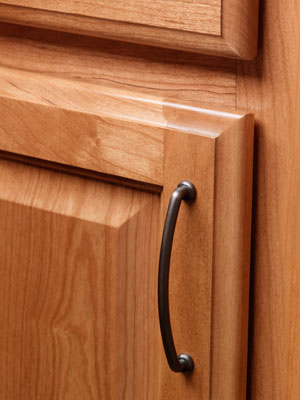
Preventative Care
Avoid mounting heat-producing appliances, such as coffee makers and toaster ovens beneath cabinets. Excess heat and moisture from these appliances can damage cabinets.
Never use detergents, soap pads, or steel wool on wood cabinets – these harsh abrasives will mar the wood finish.
Avoid the use of paste wax and polishes that contain silicone; the wax build up is difficult to remove and will leave a residue that attracts dust.

Cleaning and Care of Hardware
Use mild soap and warm water to clean door/drawer knobs or pulls
Buff hardware with a clean, dry cloth.
Lubrication of hinges is not necessary – hinges can be cleaned or dusted using cotton-tipped swabs.
CAUTION: Many brass and silver polishes contain harsh chemicals that can damage the hardware’s surface. These polishes and cleaners are NOT recommended.
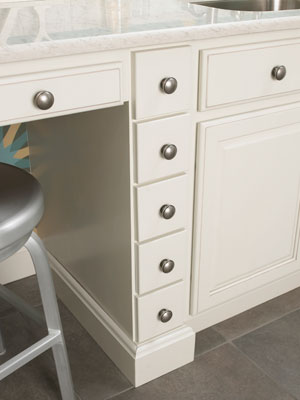
Countertops
Stone Routine Care
For regular cleaning, use mild soap and warm water. We also recommend a stone cleaner, available at most hardware and home improvement stores.
Stone cleaner pop-up wipes are perfect – they contain a low level of sealer.
Granite and other natural stone should be sealed once a year.
Wipe the countertop down with the sealer, let sit for recommended amount of time, then wipe away with a clean dry cloth.
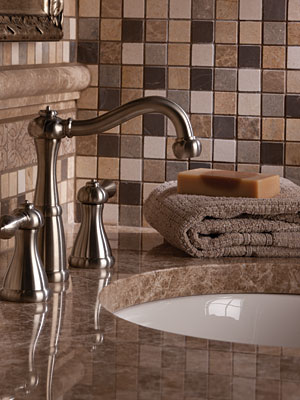
Stone Preventative Care
Although granite is resistant to heat, avoid placing extremely hot items directly on it.
Use trivets and hot pads; allow hot pots and pans to cool before placing on countertop.
Avoid letting acidic substances (lemon juice, catsup or vinegar) sit on the counter for an extended period of time to avoid etching.
Avoid exposing to strong chemicals and solvents such as oven cleaners, rust removers, paint strippers, and anything containing harsh chemicals that may react with your countertop.

Quartz Routine Care
Wipe your Quartz surface with soap and warm water on a regular basis.
Regular household cleaners may be used in place of soap and water.
To clean up difficult spills, wipe the surface with warm water and soap. If needed, apply a common household cleaner.
For stains that harden as they dry, (such as food and gum) use a blade or putty remover to remove the mess. Clean using warm water and soap.
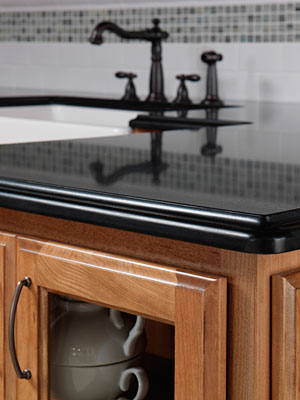
Quartz Preventative Care
Quartz is extremely resistant to heat, however all stone can be damaged by sudden and extreme temperature changes, especially near the edges.
Use a trivet or a hot pad to protect your Quartz surface from extreme heat.
Avoid exposing to strong chemicals and solvents such as: nail polish remover, permanent markers or inks, oil-based soaps, and furniture cleaners or paint strippers that contain trichlorethane or methylene chloride.
Also avoid exposing your Quartz surface to chemicals with high alkaline/PH levels, such as oven cleaners.
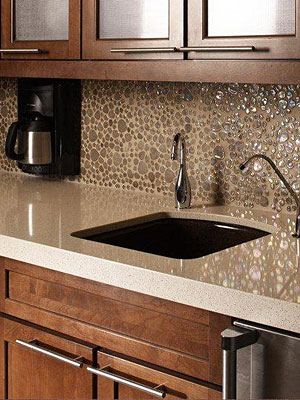
Solid Surface Routine Care
Soapy water, ammonia-based cleaners or commercially available solid surface cleaners will remove most dirt and residue. Stubborn residue will require a stronger cleaner.
Ammonia based liquid cleaner (not window cleaner) may also be used. Always rinse the surface thoroughly and wipe dry.
Drying is an important step, preventing a build-up of soap film or cleaning residue which can create the appearance of light scratches over time.
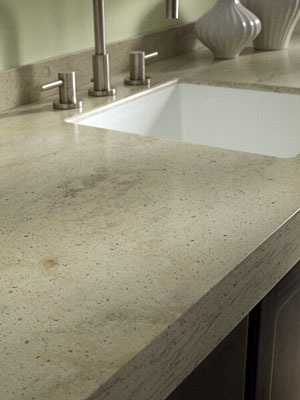
Solid Surface Preventative Care
Avoid surface contact with: strong chlorinated solvents, chloroform, ketones, methylene chloride (paint removers), very strong acids such as concentrated sulfuric and hydrochloric acids.
Acid drain cleaners should not be used.
Surfaces exposed to these agents should be promptly flushed with water.
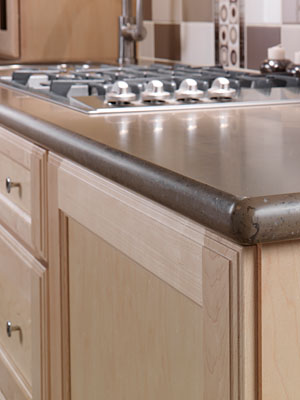
Laminate Routine Care
To clean the surface, use a damp cloth or sponge and a mild soap or detergent.
Difficult stains such as coffee or tea can be removed using a mild household cleaner/detergent and a soft bristle brush, repeating as necessary.
If a stain persists, use a paste of baking soda and water and apply with a soft bristled brush.
Although baking soda is a low abrasive, excessive scrubbing or exerting too much force could damage the decorative surface, especially if it has a gloss finish.
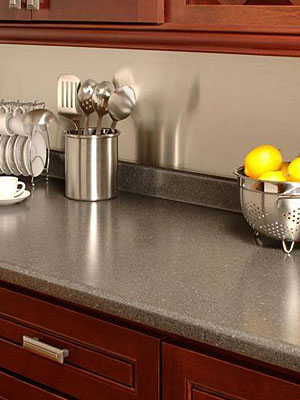
Laminate Preventative Care
Never place pots or dishes directly from the oven or burner on an unprotected laminate surface; such extreme heat can cause cracking or blistering.
Drain cleaners containing lye will permanently damage any laminate surface.
Hair, textile and food dyes can cause permanent stains. If dye should happen to spill, wipe it up immediately with dishwashing detergent or an all-purpose cleaner.
Do not work with oven cleaners on an unprotected countertop.
Toilet bowl cleaners contain harsh chemicals that can cause permanent damage.
Steel wool and other abrasive pads will damage laminates. Also, avoid leaving steel wool pads on your countertop as the metal can rust and leave stains.
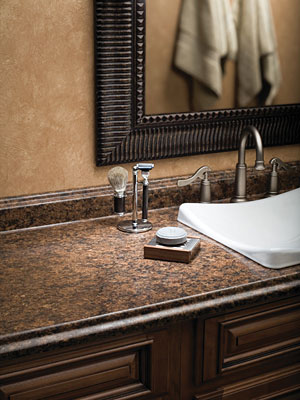
Window Treatments
Routine Care
For deeper cleaning, vacuum gently with a brush attachment of any vacuum cleaner.
Compressed air or hair dryer (non-heat setting) can be used to blow dust off selected window coverings.
Spot-clean shades and blinds with a soft cloth or sponge moistened with lukewarm water. Add mild detergent if needed.
Blot gently to avoid creasing or damaging the fabric. Rubbing can damage fabrics.
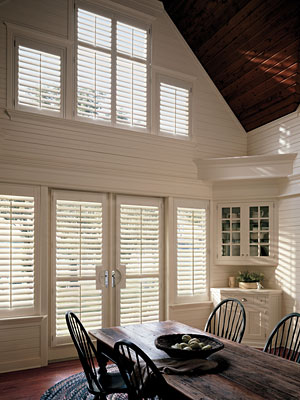
Cleaning Specific Materials
Stain-finished wood blinds: Water may damage the surface, so use lemon oil or a wood preservative to clean.
Aluminum horizontal blinds: Use an over-the-counter blind cleaner with a soft cloth.
Vertical blinds: Reduce build-up of static electricity by applying a very thin film of detergent on all slats and vanes.
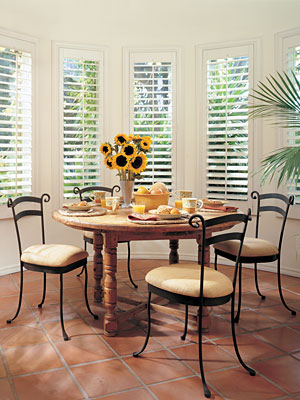
Cleaning Specific Materials, continued
Alternative wood blinds and honeycomb fabrics: Bathtub cleaning/water immersion is the most effective method. Here’s how it’s done:
Step 1: Immerse entire shade/blind assembly in lukewarm water with mild detergent. Wash for five minutes by gently moving liquid around with your fingers.
Step 2: Rinse with clear water.
Step 3: Close shade/blind before removing from rinse water.
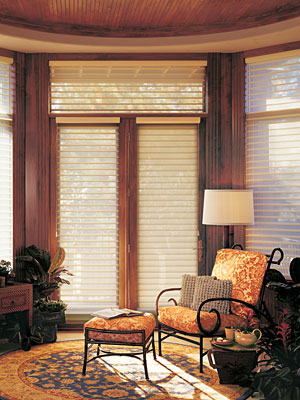
Cleaning Specific Materials, continued
Step 4: Hold rails and tilt the shade/blind to allow excess water to drain off.
Step 5: Re-install damp shade/blind into window opening.
Step 6: Lower shade all the way to allow complete drying.
NOTE: Honeycomb shades should be dried in fully lowered position. Certain honeycomb fabrics should not be immersed in water. Please consult the detailed Cleaning and Care instructions included with your shade for more specific information.
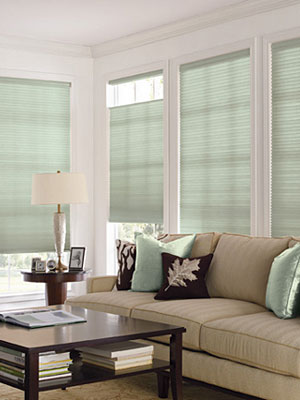
Additional Cleaning Tips
Avoid dry cleaning – a light dusting with a vacuum cleaner brush attachment on a regular basis will keep them looking new.
Consider an on-site injection/extraction cleaning system. This type of cleaning injects a cleaning solution into the fabric and extracts the dirty solution in the same motion. Typically performed in the home, there is no need to remove the window treatments. Dry method is recommended for certain fabrics.
Steaming can be done to remove wrinkles from some fabrics using a hand-held travel size steamer that provides continuous steam.
